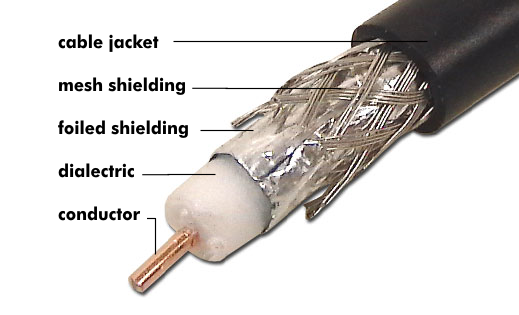shielding
Shielding is an electrically conductive protective sheath that surrounds a transmission medium, a device or a room. To differentiate, one speaks of cable shielding, device shielding and room shielding. The shielding supports electromagnetic compatibility( EMC) and thus reduces electromagnetic interference on the signal-carrying conductors or in the devices; on the other hand, the shielding also reduces scattering from the cable or the devices to the environment.
Types of shielding for cables
Incable shield ing, a distinction is made between foil and braided shielding and the combination of both. Foil shielding is more efficient at higher frequencies, while braided shielding is more efficient at lower frequencies. Foil and braided shields can also be laid alternately in layers, as in the case of the classic " yellow cable"
The quality of the shielding depends on the coverage and is expressed in the shielding effectiveness. It goes directly into the coupling resistance, also called shield coupling impedance or transfer impedance. The transfer impedance is the ratio between the RF interference voltage induced on a data line and the causative RF interference current flowing through the shield. The smaller the transfer impedance, the better the shielding effect. In addition to the cable shielding mentioned above, there are also special cables in which the shielding is a copper tube. These cables are characterized by a very high shielding effectiveness.
Equipment and room shielding
Equipment shielding provides protection against electrical, magnetic or electromagnetic interference fields that can enter or leave the housing or rack. The shielded enclosures are made of tin-plated sheet steel, aluminum or, in the case of smaller enclosures, metallic-coated plastic and form a Faraday Kafig.
In contrast to cable shielding, the RF tightness of equipment shielding is somewhat limited by openings for cable feedthroughs, ventilation slots, and gaps between case parts. These RF leakages can be eliminated by using suitable seals with contact springs, metallic air filters, or corrosion-protected contact surfaces. The heat generated by the device can be dissipated by appropriate design measures. Plastic enclosures use intrinsically conductive plastics made of plastic-metal materials or plastics with metallized surfaces for shielding.
Room shielding involves the shielding of entire rooms. Such shielding is important for interference-free measuring rooms protected against electromagnetic influences, but also for medical rooms, for operating theaters, and for rooms in which highly sensitive data is stored, such as in the military sector, in banking, or in secret services.
Room shielding includes all room walls, the ceiling and the floor, which are lined with steel sheets, copper foils or shielding fabric. The room openings are RF shielded by spring contacts, other openings such as the air conditioning system or by conductive fabrics and fleeces. In addition to the RF shielding for walls, doors, windows and other openings, the room shielding must also include shielding of all cable penetrations and the current-carrying and data-carrying lines and cables against interference.


